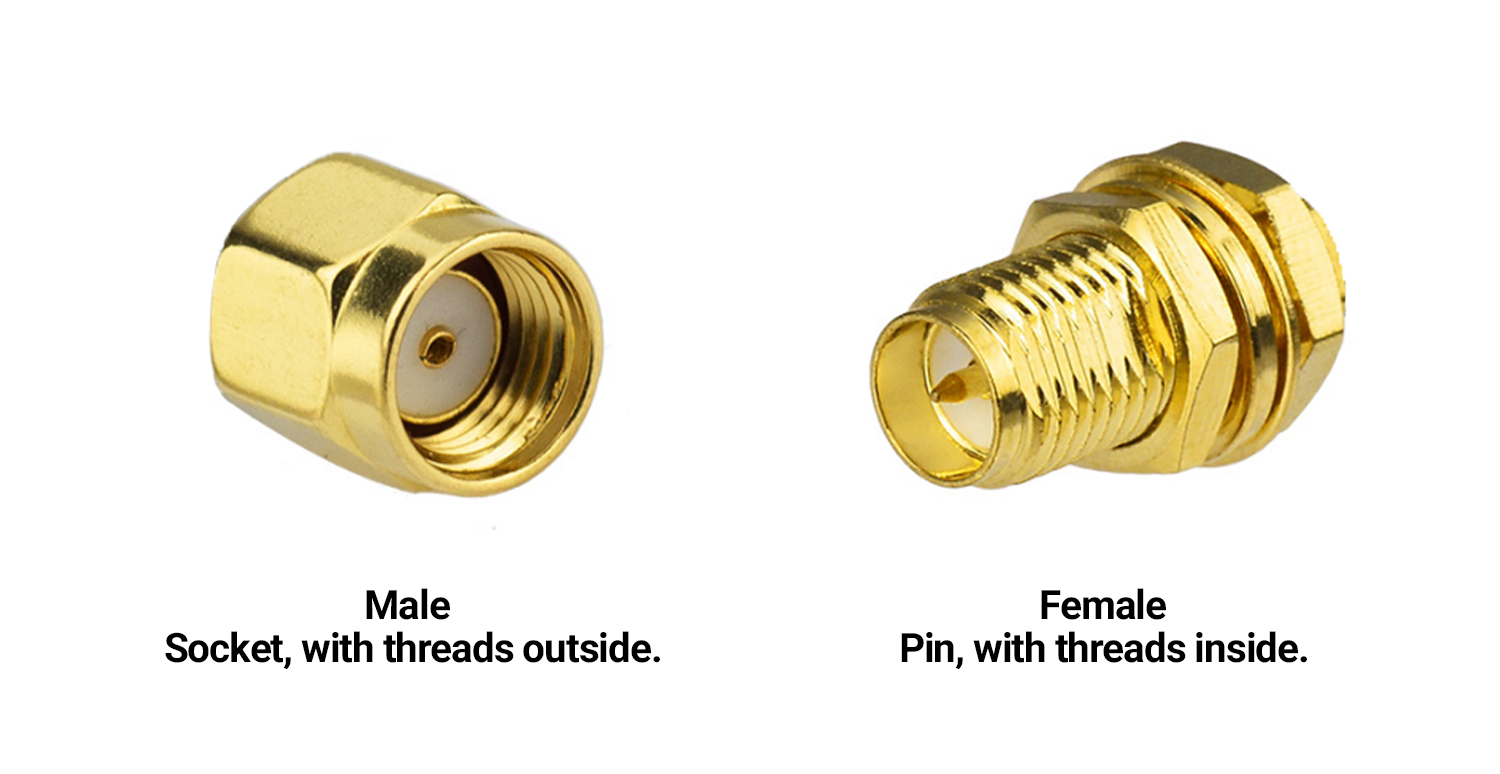We use cookies to make your experience better. To comply with the new e-Privacy directive, we need to ask for your consent to set the cookies. Learn more.
Everything You Need to Know About Antenna RF Connectors
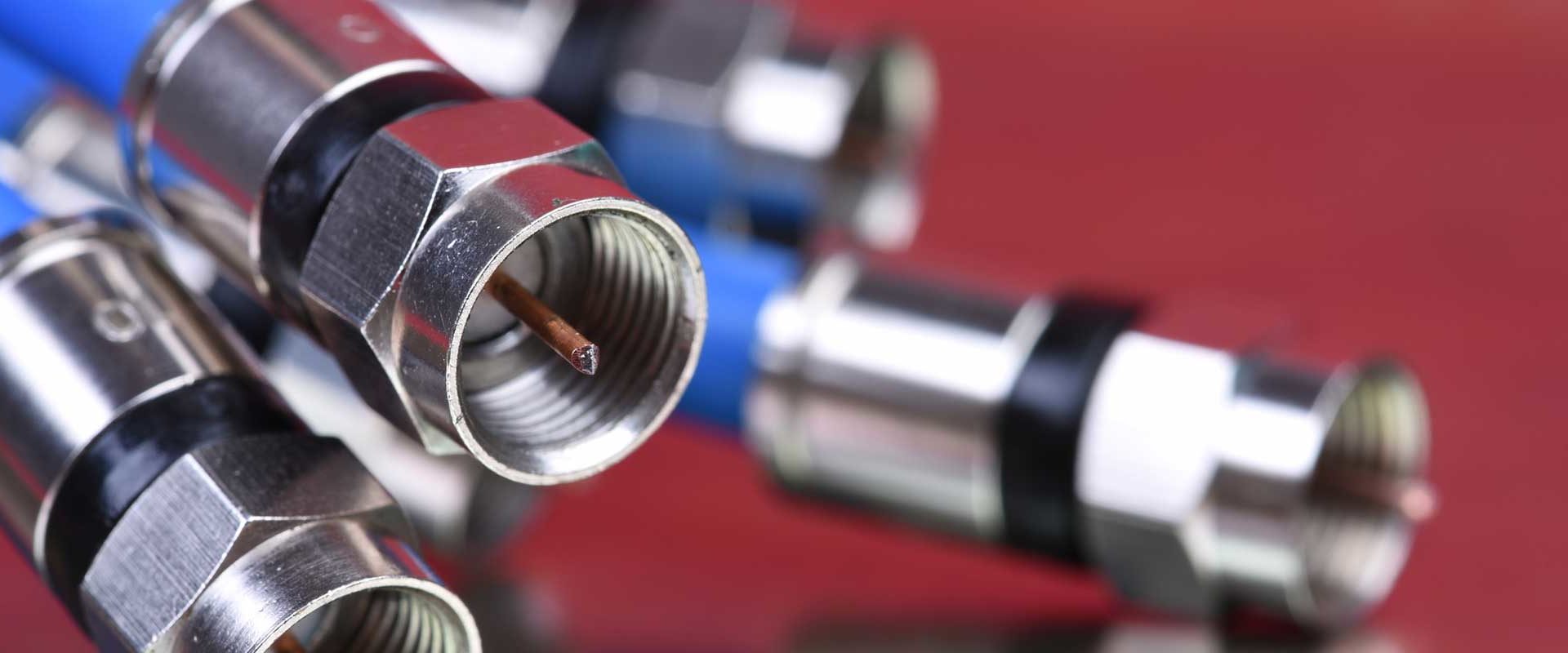
Everything You Need to Know About Antenna RF Connectors
A key component of any IoT device is its antenna. This allows devices to communicate information with each other at the speed of light. People will often dive deep into research, trying to find the best antenna with the best performance. However, many overlook one of the most important parts—the RF connector, which connects the antenna to its device.
With initiatives like Helium's People's Network and the overall rising popularity of IoT, there is a growing demand for antennas. Therefore, we have created this brief blog post to provide you with key information you need to know when it comes to antenna connectors.
What is an RF connector?
A coaxial RF connector (radio frequency connector) is an electrical connector designed to work at radio frequencies in the multi-megahertz range. RF connectors are typically used with coaxial cables, being designed to maintain the shielding that the coaxial design offers.
Common RF connector types include Type-N, UHF, TNC, BNC, and SMA. They are used for many things such as radios, surge protectors, enclosures, coaxial cables, and antennas.
To limit signal reflection and power loss, newer connectors are designed to minimize the change in transmission line impedance. The RF connector must also prevent capacitive pickup and electromagnetic interference from introducing outside signals into the circuit.
Understanding gender and polarity
First and foremost, when mating two connectors, it is important to ensure both connectors have the same polarity. For example, an RP-SMA male connector works only with an RP-SMA female connector.
- RF plugs are usually male, and the threads are on the inside of the shell.
- RF jacks are usually female, and the threads are on the outside of the shell.
- The shell of a male plug usually covers the shell of a female jack.
- In standard polarity, the female jack has a socket in the center designed to receive the pin from the male plug.
- In reverse polarity, the pin is in the female jack, and the socket is in the male plug.
Most common connector types
N connectors
The Type N connector is a weatherproof, medium-sized, threaded connector, designed for durable applications with frequencies as high as 11 GHz. It's commonly used in microwave systems operating at low frequencies that need to be rugged and cost-effective.
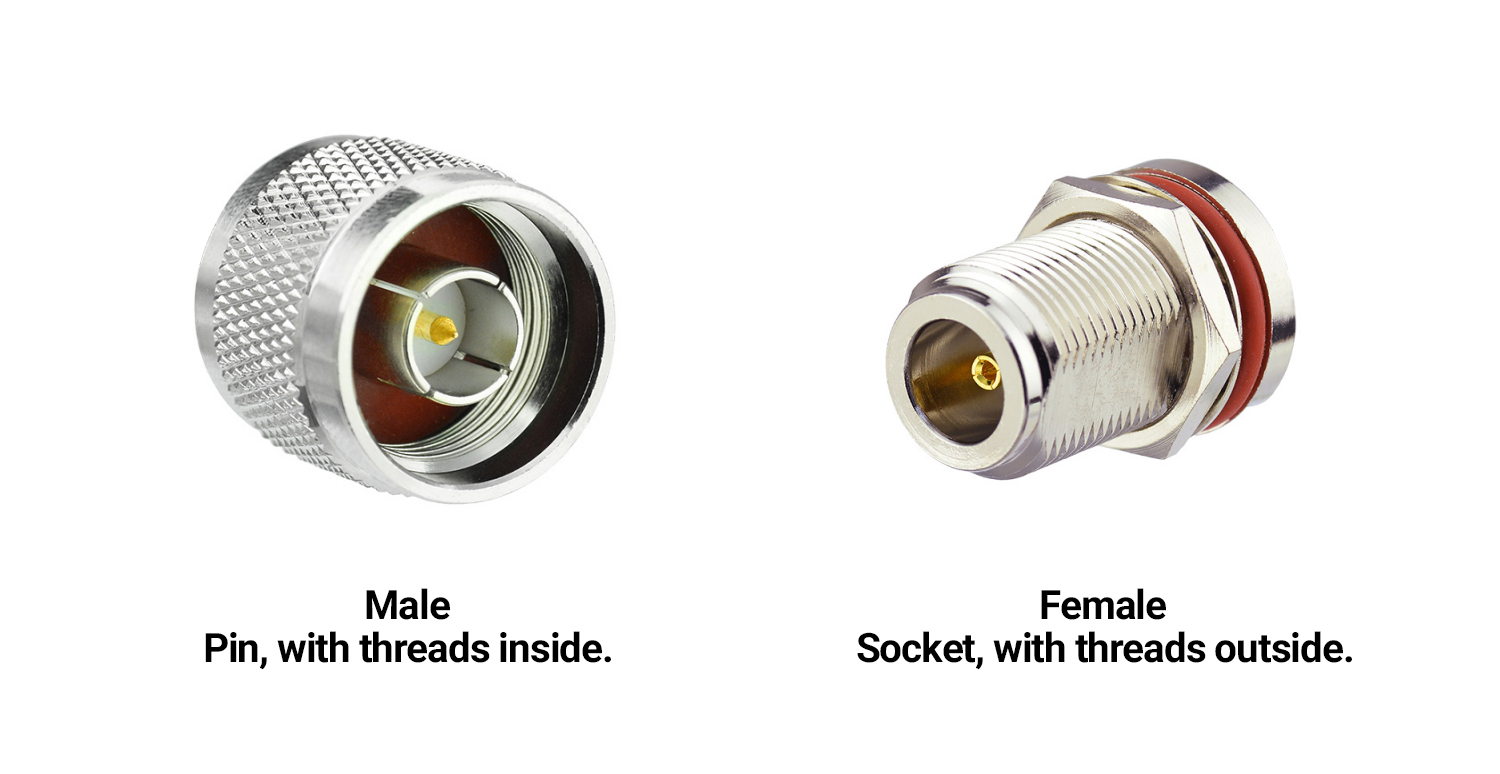
UHF connectors
The ultra-high frequency (UHF) connector is a threaded RF connector that carries frequency signals up to 100 MHz. It's not waterproof and has non-constant surge impedance. UHF connectors are typically used in amateur radio, citizens band radio, and marine VHF radio applications.
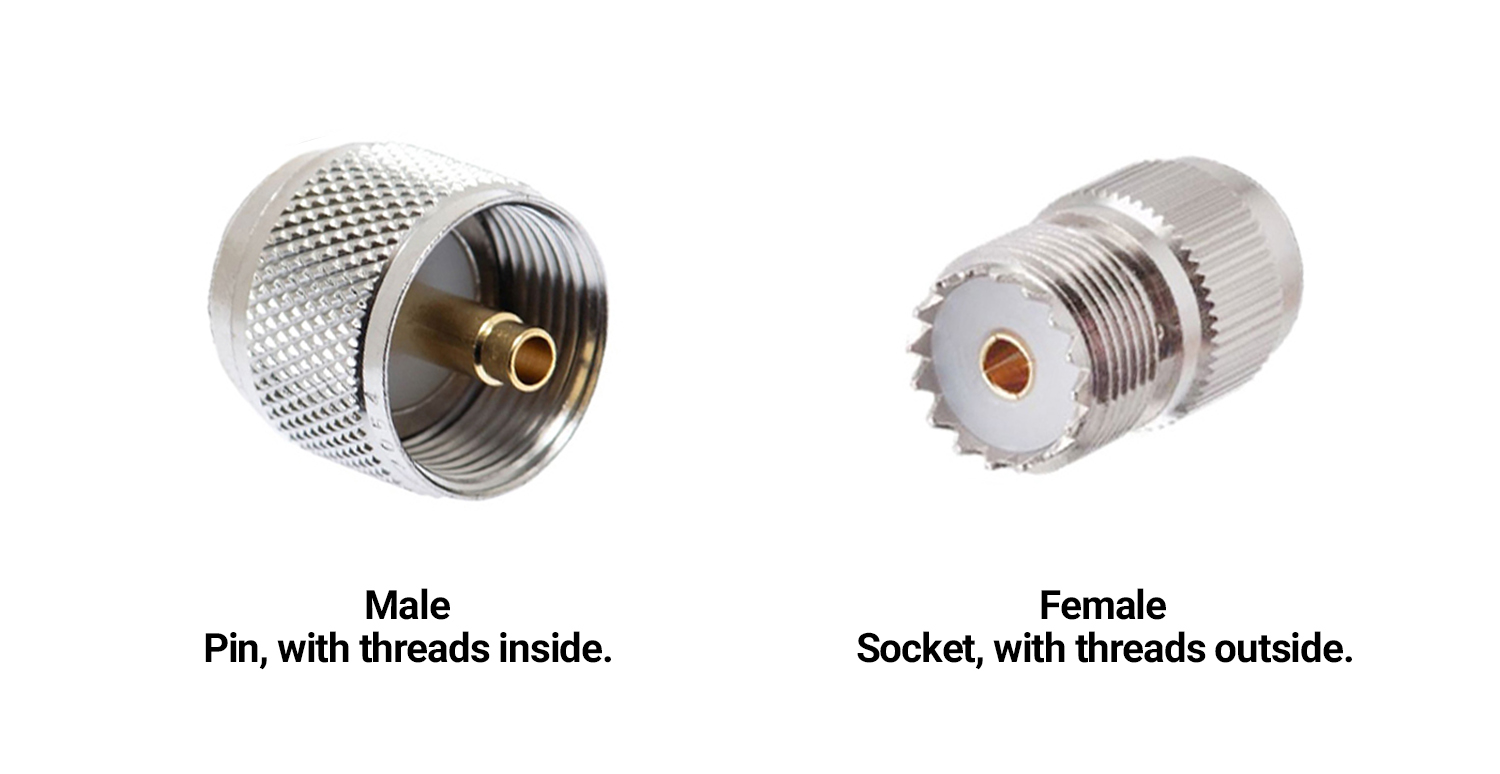
BNC connectors
BNC is a miniature quick connect/disconnect RF connector commonly used in low-frequency applications. It was used for the military sector originally and has gained wide acceptance in composite video on commercially used video devices and RF applications up to 2 GHz.
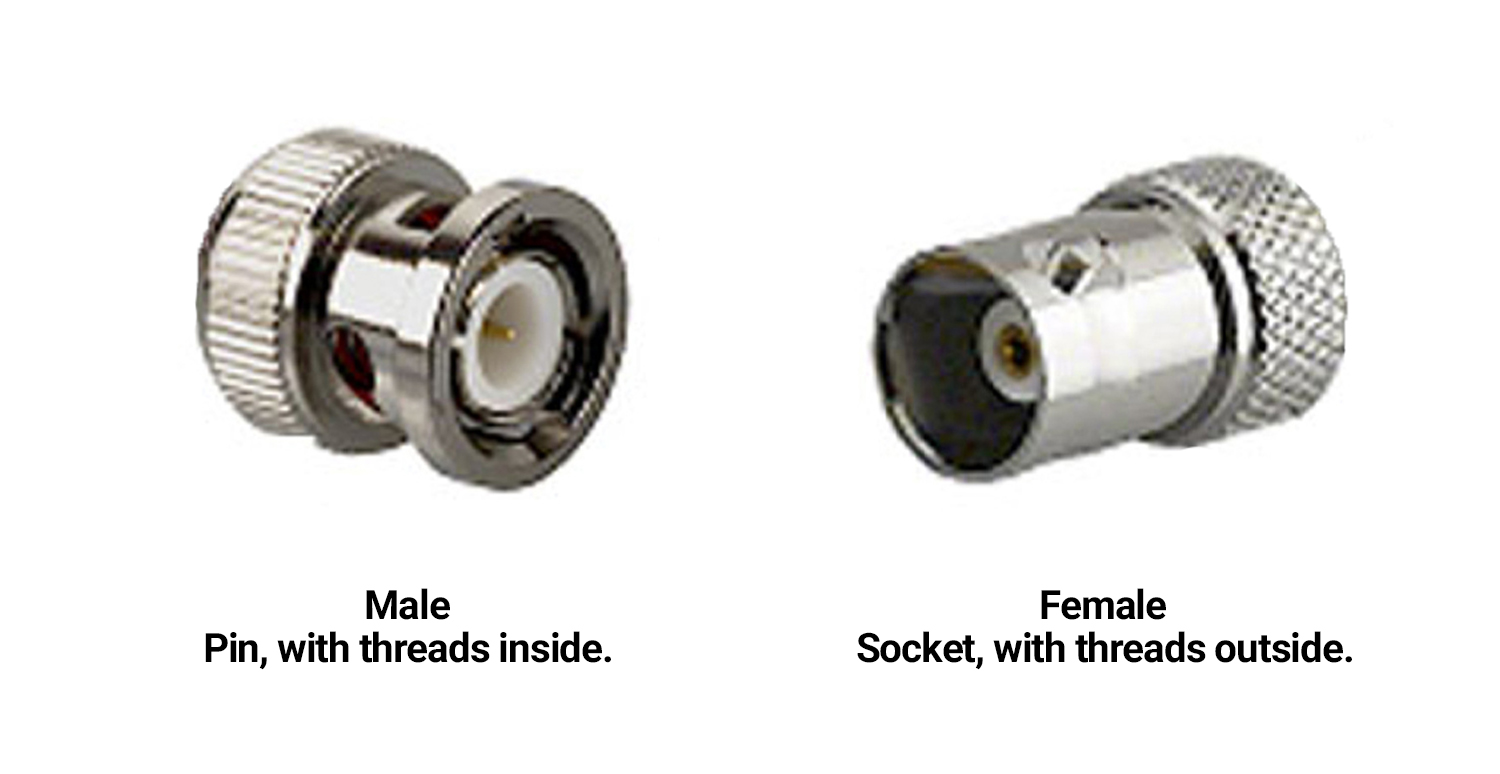
TNC connectors
TNC is a threaded version of the BNC connector and has a better performance compared to BNC connectors at microwave frequencies. It is used in radio and wired applications.
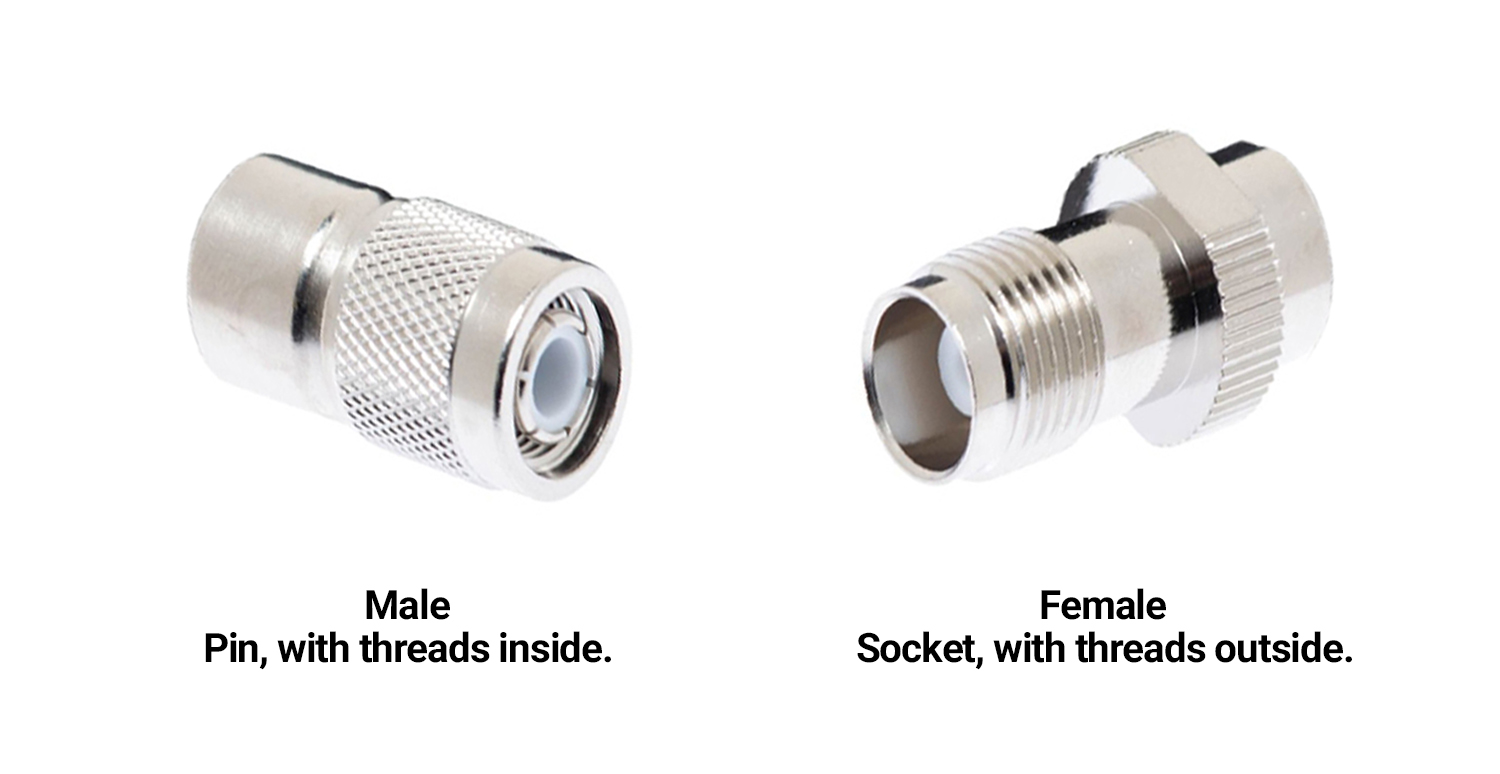
SMA connectors
SMA (SubMiniature version A) connectors are semi-precision coaxial RF connectors that operate up to 18 GHz, although some proprietary versions support up to 26.5 GHz. It is commonly used in RF power amplifiers, RF isolators, microwave systems, mobile telephone antennas, Wi-Fi antenna systems, and radio astronomy at 5 GHz+. It is not sufficiently weatherproof for outdoor deployments, so it's used primarily for indoor solutions.

RP-SMA connectors
In the reverse-polarity version of SMA (RP-SMA), the gender of the interface is reversed. "Reverse polarity" here refers only to the gender of the connector's contact pin, not the signal polarity. Similar to SMA, it is not weatherproof and is suitable only for indoor deployment.
